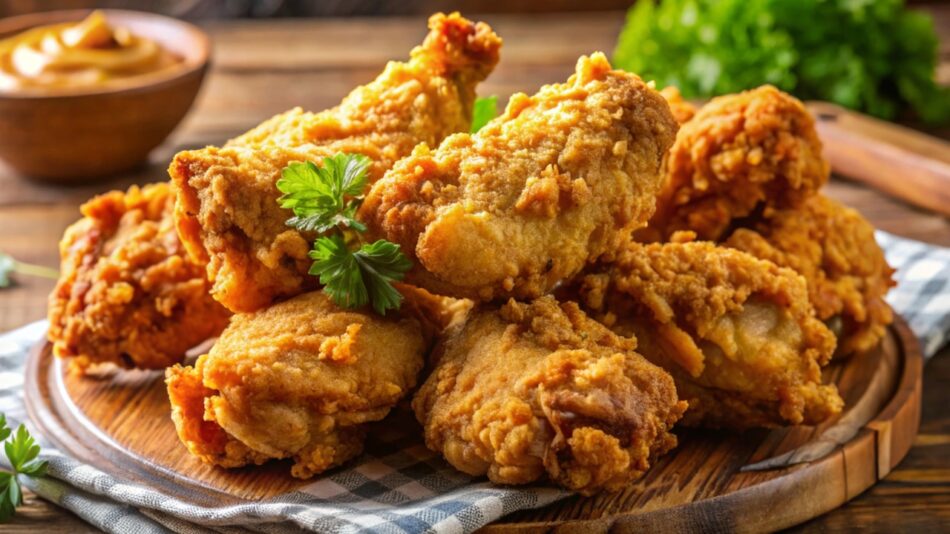Some folks hold that there is a shared trait among Southerners that we can turn just about anything into a good reason for a party.
Today we want to focus on a bonafide reason to throwdown – Father’s Day. Ever since 1909, the third Sunday in June has been set aside to honor dear old dad for his contributions to the family.
And I would also wager that ever since then folks have struggled to come up an appropriate way to celebrate the old man.
According to the internet (which doesn’t lie), folks spend more than $20 billion annually on Father’s Day gifts. That’s a lot of Old Spice, no matter how you figure it.
Ties, socks, shirts and other clothing are also popular gift ideas. The same goes for grilling accessories and associated outdoor cooking gear.
May I make a suggestion here? If your dad is comfortable stirring a pot from time-to-time (be it inside the house or outside), then might I recommend something that every dedicated Southern cook needs – a go-to cast iron skillet.
I know, a lot of folks already are in possession of lots of heirloom cast iron cookware tailor-made for certain dishes. But really, can you have too much cast iron? I think not.
It’s no secret that I am a fan of the cast iron cookware produced right up the road in South Pittsburg, Tennessee. They make a huge line of reliable cooking vessels to suit any cooking need.
But whatever you buy him, how about a good home-cooked meal to go along with it. (This is, after all, a food column so you should have seen that coming.)
Coming up with what to cook is easy. Why? Because if Father’s Day is not a good reason for some familiar, traditional comfort foods, then I don’t know what is.
Here are a few suggestions from a card-carrying father himself.
Let’s start with an easy one. This is my go-to recipe for old-fashioned, Southern fried chicken.
Oh, and it would be a good way to put that brand-new cast-iron skillet your bought to good use. Sneaky, huh?
Buttermilk Fried Chicken
8 servings
- 1 chicken, cut into 8 pieces
- 1 cup buttermilk
- 1½ cups all-purpose flour
- 1 teaspoon salt
- 1 teaspoon black pepper
- Peanut oil, for frying
Place chicken in a dish large enough to hold it in a single layer. Pour the buttermilk over the top and mix it up so that each piece is covered.
Cover and refrigerate for at least 1 hour.
Meanwhile, combine flour, salt and pepper in a large bowl or resealable plastic bag.
Remove chicken from buttermilk and add one piece at a time to the flour. Shake to coat.
Shake off excess flour and let it rest on waxed paper for 15 minutes before frying.
In a large cast iron skillet, heat about ½-inch of oil to 350 degrees. Add chicken to pan in batches, being careful not to crowd it together.
Cook, turning frequently, for about 10-12 minutes. When chicken is golden brown and juices run clear, remove to drain on a paper towel.
Cook remainder of chicken the same way.
What goes well with fried chicken, you logically ask? That’s easy – mashed potatoes. It doesn’t take a rocket scientist to figure out that fried chicken and mashed potatoes are what many think is the bedrock of Southern cookery.
Here is a recipe that I have offered many times in the past as a Thanksgiving Day side dish suggestion. It’s easy enough that even novice home chefs can make with impunity.
Mashed Potatoes
8-10 servings
- 2 pounds (8 medium) potatoes, peeled, cut into 1-inch pieces
- 2 teaspoons salt, divided
- 1/4 cup (1/2 stick) butter, softened
- ½-1 cup hot milk or half and half
In a large saucepan, combine 5 cups water, potatoes and 1½ teaspoons of the salt. Bring to a boil.
Reduce heat to medium and cover. Cook 12-15 minutes, or until potatoes are tender when pierced with a fork.
Drain potatoes thoroughly in a colander. Return to saucepan; heat over medium-low heat 2-3 minutes to dry potatoes, stirring occasionally.
In saucepan, mash potatoes with potato masher or beat with electric hand mixer. Stir in butter, remaining 1/2 teaspoon salt and 1/2 cup of hot milk.
Add additional milk, a little at a time, if necessary, for desired consistency. Beat until light and fluffy.
Season to taste with additional salt, if desired. Serve immediately.
Now, while I freely admit that what I’m about to say flies in the face of my previously stated position on biscuits vs. cornbread, I’m going to say it anyway: How about some fresh biscuits to go with this traditional Father’s Day feast?
Here is a recipe from the aforementioned Lodge Manufacturing folks. It is specifically tailored for their signature 10.25-inch cast iron skillet that is my go-to size for everyday cooking.
Briggs Buttermilk Biscuits
6-8 servings
- 2 cups self-rising all-purpose flour, plus extra for dusting counter
- ½ cup (1 stick) chilled unsalted butter, plus an additional 2 tablespoons butter, melted
- ¾ cup buttermilk
- 3 tablespoons shortening, melted
Preheat oven to 450 degrees. Place a 10.25-inch skillet into the oven to preheat.
Measure the self-rising flour into a large mixing bowl.
Using the coarse side of a hand grater, quickly grate 1 stick (½ cup) cold hard butter into the self-rising flour. Working quickly, use fingers to gently distribute the shredded butter into the self-rising flour.
Add the buttermilk, then stir until just combined.
Turn onto a lightly floured surface and using floured fingers, quickly pat into approximately the size of an 8½ x 11-inch sheet of paper, which will be about ½ to ¾ inches thick.
Very lightly dust the surface of the dough with flour from your fingertips, then fold the sheet into thirds, as when folding a business letter.
Repeat the patting, dusting and folding steps seven times, or fewer if you feel the dough begin to tighten. (Overworking the dough makes for a tough biscuit!)
The final time, pat the dough to a rectangle slightly larger than your skillet. Using a round biscuit cutter or drinking glass, cut into about seven round biscuits. Gather the scraps to form the 8th biscuit by hand.
With a handle mitt, carefully remove the preheated skillet for the oven. Drop shortening into the preheated skillet, then return to oven for a couple of minutes until it is melted.
Place each biscuit into the skillet and using a fork, immediately turn to coat both sides with the shortening.
Place the hot skillet into the oven, reduce oven temperature to 425 degrees. Bake until tops of biscuits are golden brown, about 12-18 minutes.
Remove from oven; brush tops with melted butter. Serve while hot.







